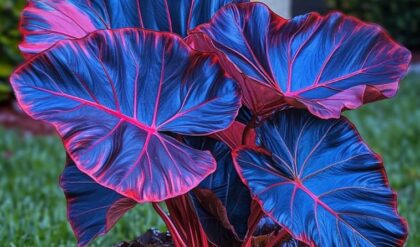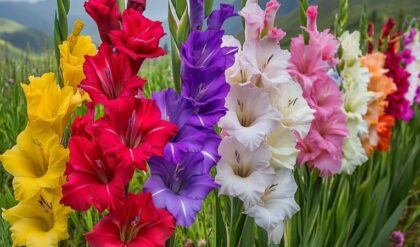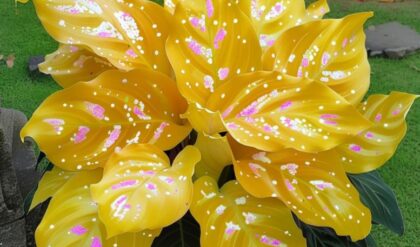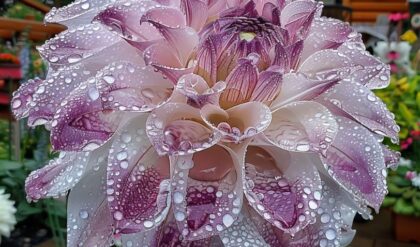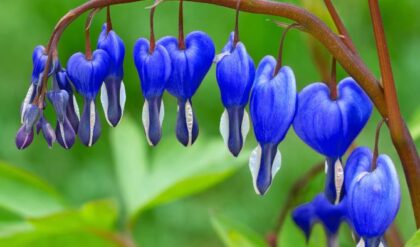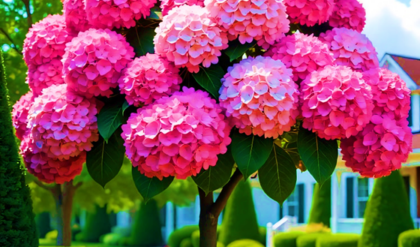The Elephant Ear Plant, scientifically known as Colocasia gigantea, especially in its magnificent Thai variant, is very much a real entity thriving in various environments. Contrary to any whimsical thoughts that might link its broad leaves to a mere optical illusion or artifice, this plant stands tall as one of nature’s impressive botanical creations, reaching heights up to 10 feet and flaunting leaves that can extend up to 5 feet wide. Its striking form captures attention with its lush green foliage, reminiscent of oversized elephant ears — hence the name. This realness stirs excitement among plant enthusiasts and curious onlookers alike, as it brings an exotic touch to gardens and landscapes worldwide. One might imagine planting this giant at the entrance of a home, only to find neighbors pivoting their heads in awe upon their first encounter with its commanding stature.
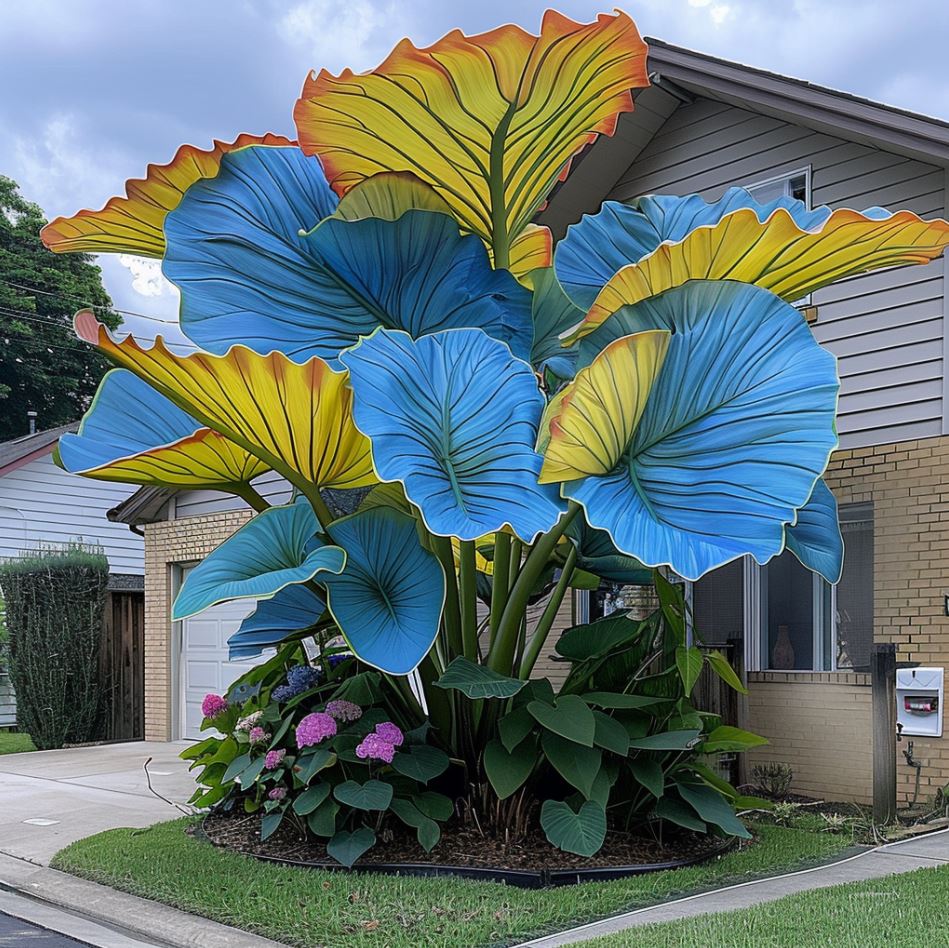
Characteristics and Growth
Lovers of tropical flora are particularly drawn to Colocasia gigantea. Beyond being a visual spectacle, this plant embodies the essence of humidity-rich climates, thriving in USDA zones 8-10, where it can soak up full to partial sun while preferring consistently moist, well-drained soil. The plant’s vivid presence isn’t merely biological; it evokes cultural resonance as well, particularly within Thai aesthetics, embodying the beauty of flourishing nature. One could reflect on how communities that foster outdoor greenery might see an uplift in neighborly interactions, spurred by admiration for such a captivating plant.
Understanding the Plant’s Appearance and Adaptability
- The Elephant Ear Plant is known for its massive, broad leaves that can reach up to 5 feet in width, earning it the name “Colocasia gigantea” due to its impressive size.
- The plant’s leaves are a striking shade of green, with a glossy, textured surface that adds to its visual appeal.
- Colocasia gigantea thrives in warm, humid climates, typically found in USDA hardiness zones 8-10, where it can tolerate full sun to partial shade conditions.
- The plant’s growth habits are well-suited to its environment, with its sturdy stems and deep root system allowing it to reach towering heights of up to 10 feet.
- Proper soil conditions are essential for the Elephant Ear Plant, as it prefers consistently moist, well-drained soil to support its lush foliage and robust growth.
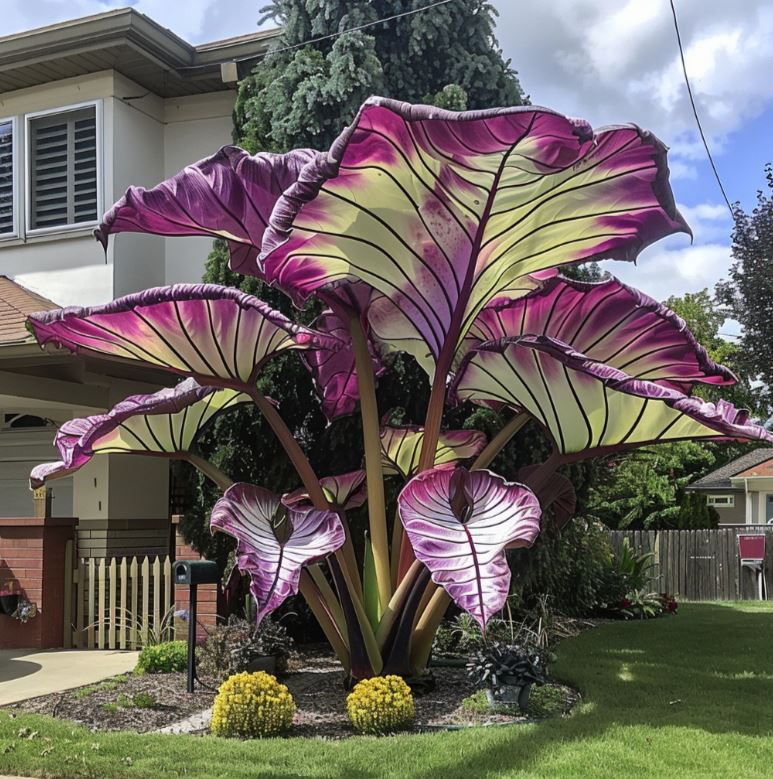
The Cultural Significance of Colocasia gigantea
- In many cultures, particularly in Thailand, the Elephant Ear Plant holds deep cultural significance, often symbolizing prosperity, growth, and the beauty of the natural world.
- The plant’s grand stature and striking appearance have made it a beloved fixture in Thai aesthetics, with its inclusion in gardens and landscapes reflecting a reverence for the natural environment.
- The presence of Colocasia gigantea in a community can foster a sense of communal pride, as residents take delight in the plant’s captivating presence and the way it enhances the local landscape.
- The plant’s ability to create a sense of awe and wonder in those who encounter it speaks to its power to connect people with the natural world, inspiring a deeper appreciation for the wonders of the botanical realm.
Nurturing and Maintaining Colocasia gigantea
- Caring for the Elephant Ear Plant requires a delicate balance of providing the appropriate environmental conditions and attentive nurturing.
- Ensuring consistent moisture in the soil is crucial, as Colocasia gigantea is known to thrive in humid, water-rich environments.
- Proper sunlight exposure is also essential, with the plant preferring a mix of full and partial sun to support its lush foliage growth.
- Fertilizing the plant regularly with a balanced, nutrient-rich formula can help promote vigorous growth and maintain the plant’s striking appearance.
- Diligent monitoring and prompt attention to any pests or diseases that may affect the plant are necessary to ensure its long-term health and vitality.
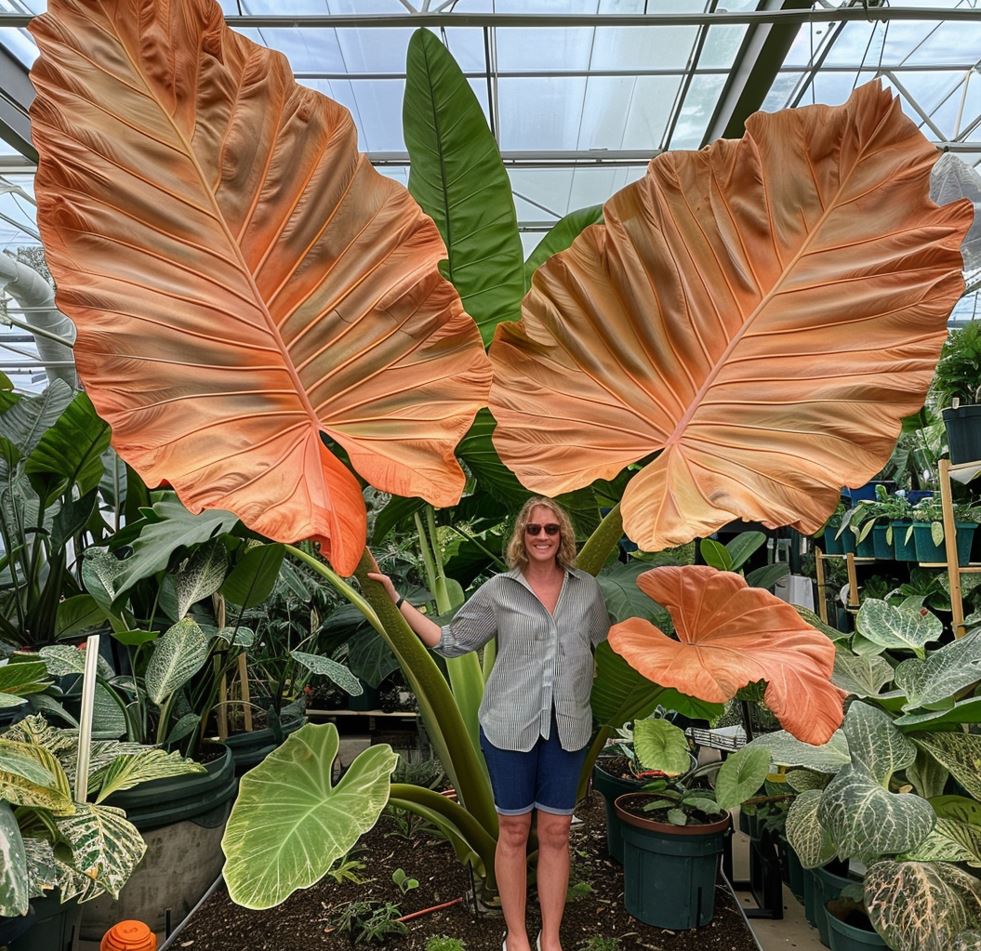
The Illusion of Faux Plants
While exploring whether the Thailand Giant Elephant Ear is real or fake, it’s vital to juxtapose it against the backdrop of artificial alternatives. In recent years, synthetic plants have become increasingly sophisticated, mimicking not just the physical features of real plants but also their colors and textures. An elephant ear made from durable materials could be strategically placed to mimic the grandeur of Colocasia gigantea without the upkeep. However, will these fakes ever evoke the same emotional responses? Consider the different ways these choices affect us: the simple act of nurturing a living thing fosters connections to our environment, whereas plastic replicas offer convenience but lack true vibrancy and life energy. Thus, pondering the plant’s reality also nudges us to assess our values—do we prioritize authenticity over mere aesthetics?
The Rise of Artificial Plant Alternatives
- The growing popularity of synthetic, artificial plants has introduced a new dynamic in the world of horticulture and landscape design.
- These faux plants are designed to mimic the physical characteristics of their natural counterparts, often with remarkable precision in terms of leaf shape, texture, and color.
- The convenience and low-maintenance aspect of artificial plants have made them an attractive option for those seeking the aesthetic appeal of greenery without the ongoing care and upkeep required for live plants.
- However, the question remains: can these artificial alternatives ever truly capture the essence and vitality of a living, thriving plant like the Colocasia gigantea?
Evaluating the Emotional Impact of Real vs. Artificial Plants
- The experience of interacting with a living, breathing plant like the Elephant Ear Plant can evoke a deep, emotional response in individuals, fostering a connection to the natural world.
- The act of nurturing and caring for a living organism, witnessing its growth and development, can be a profoundly rewarding experience that transcends the merely visual or aesthetic.
- In contrast, artificial plants, while visually appealing, lack the inherent life energy and dynamic nature of their real counterparts, potentially failing to elicit the same emotional resonance.
- The decision between investing in a living plant or opting for a synthetic alternative ultimately reflects personal values and priorities, highlighting the importance of reflecting on the role of authenticity in our relationship with the natural environment.
Balancing Aesthetics and Authenticity
- The debate over real vs. artificial plants invites us to consider the balance between aesthetic appeal and authentic connection to the natural world.
- While artificial plants may offer convenience and a degree of visual similarity, they can never fully replicate the depth of experience and emotional resonance that comes with nurturing a living, thriving plant.
- Embracing the reality of the Elephant Ear Plant allows individuals and communities to participate in the cultivation and appreciation of nature, fostering a deeper understanding and respect for the natural world.
- Ultimately, the choice between real and artificial plants reflects personal values and priorities, inviting us to consider the long-term implications of our decisions on our connection to the environment and the narratives we weave into our lived experiences.
Cultural Symbolism and Environmental Impact
The implications of introducing Colocasia gigantea into urban settings are far-reaching, spanning ecological, aesthetic, and even psychological realms. By incorporating this majestic species, homeowners participate in fostering biodiversity, providing habitats for various insects and creatures that contribute to local ecosystems. Moreover, in cultures where nature symbolizes prosperity and growth, adopting such grand foliage purveys not just beautification but also a sense of communal pride. Conversely, if cultivated inappropriately, these water-loving giants may lead to superficial concerns regarding water consumption or maintenance efforts. In essence, the debate over the realness of the Elephant Ear Plant transcends surface-level observations, inviting us to explore layers of perception about nature, culture, and environmental responsibility.
The Ecological Implications of Colocasia gigantea
- The introduction of Colocasia gigantea into urban and suburban landscapes can have a positive impact on local ecosystems by providing habitats and resources for various insects, birds, and other wildlife.
- As a water-loving plant, the Elephant Ear can help contribute to the overall moisture levels and humidity of the surrounding environment, creating a more hospitable atmosphere for diverse flora and fauna.
- The plant’s large, sprawling leaves and sturdy stems can offer shelter and nesting opportunities for a variety of creatures, enhancing the biodiversity of the area.
- By fostering the growth of Colocasia gigantea, homeowners and communities can actively participate in the preservation and restoration of natural habitats, contributing to the overall ecological balance of their local environments.
The Cultural Significance of Colocasia gigantea
- In many cultures, particularly in Thailand, the Elephant Ear Plant holds deep symbolic and aesthetic significance, often representing prosperity, growth, and the beauty of the natural world.
- The grand stature and lush foliage of Colocasia gigantea have made it a beloved fixture in Thai gardens and landscapes, reflecting a reverence for the natural environment and its ability to evoke a sense of awe and wonder.
- The presence of this plant in a community can foster a sense of pride and shared appreciation, as residents take delight in its captivating presence and the way it enhances the local landscape.
- Incorporating Colocasia gigantea into urban settings can serve as a means of reconnecting people with the natural world, cultivating a deeper understanding and respect for the botanical realm.
Balancing Water Consumption and Maintenance Efforts
- As a water-loving plant, the Elephant Ear may raise concerns among some individuals regarding water consumption and maintenance requirements.
- However, these concerns can be addressed through responsible and sustainable cultivation practices, such as selecting appropriate planting sites, implementing water-efficient irrigation systems, and adopting drought-tolerant companion plants.
- By striking a balance between the environmental benefits of Colocasia gigantea and addressing potential water-related issues, homeowners and communities can maximize the plant’s positive impact while minimizing any negative consequences.
- Educating the public on the proper care and maintenance of Colocasia gigantea can help alleviate superficial concerns and foster a deeper appreciation for the plant’s role in enhancing the local ecosystem and cultural landscape.
Conclusion
In the end, it becomes evident that Colocasia gigantea is indeed, without a doubt, a real marvel of the natural world, imbuing gardens with its phenomenal presence and compelling narratives woven into the fabric of our lives. Far from being a mere optical illusion or artificial construct, this majestic Elephant Ear Plant stands tall as a testament to the wonders of the botanical realm, captivating the senses and igniting the imagination of plant enthusiasts and curious onlookers alike.
As we navigate the increasingly sophisticated realm of synthetic plant alternatives, it becomes vital to reflect on the intrinsic value of authenticity and the profound connections we forge with living, breathing organisms. The Colocasia gigantea invites us to explore the layers of perception, cultural symbolism, and environmental responsibility that underpin our relationship with the natural world, challenging us to prioritize the tangible, life-affirming experiences that only a true living plant can provide.
Through the cultivation and appreciation of this remarkable species, we can actively participate in the preservation and restoration of local ecosystems, fostering biodiversity and cultivating a deeper sense of communal pride. The Elephant Ear Plant stands as a living embodiment of the beauty, resilience, and inherent value of the natural world, reminding us of the importance of nurturing and sustaining the vibrant tapestry of life that surrounds us.
